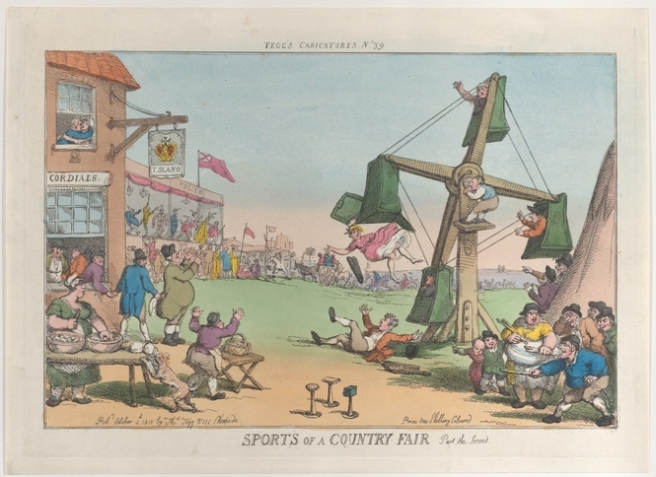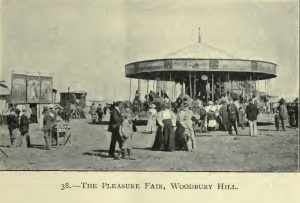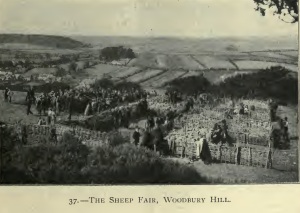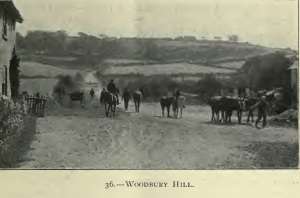By the standards of his time John Martin lived and died a ‘Gentleman.’ There were various distinguishing features of of gentlemen but perhaps the most important was the possession of land. If you owned freehold land worth 40 shillings a year you became a Yeoman and earned the dubious honour of serving on juries. Above them in status were the Gentlemen who did not work with their hands and who were financially independent. Above the gents were the ‘Esquires’ who traditionally had a coat of arms; in the newspaper account of his death he was referred to as Esq but this was probably a courtesy accorded to any one who was worthy enough to be given an entry.
By the 19th century the rise of a trading and professional class meant that who counted as a ‘gentleman’ was considerably freer than in earlier generations. [see in depth]. One of the features of a gentleman was that he had some independence from the need to work and could devote himself to leisure. For the 19th century country gentleman there was a range of outdoor activities they could take part in. In so far as what we might consider modern sports, football or tennis for example, there is scant evidence of any such activity at Evershot.
Cricket on the other hand was another matter. It’s not known when the club was formed or where they played but there is a report of a cricket match, between Dorchester and Evershot in 1841. Edwin and John Pyne both played although neither did particularly well. Edwin took six wickets as bowler but was bowled out for a duck in both innings. John Pyne did not bowl but he too was out for 0 runs. This was not a game for the common man however, the players list indicates that this was very much an event for the gentry. The Dorchester team is full of Esquires and the Evershot team included local landowners, farmers and of course two land surveyors. The rest of the Evershot team did little better than Pyne and Edwin and Dorchester won by 63 runs.
Being a country gentleman could be arduous. Above all business had to be transacted and the principal place where this was undertaken were the numerous fairs held throughout the county.
At one time there had been a weekly market at Evershot but this had long since gone. As they were held on a Saturday these, in the view at least of the clergy,[1] were often disreputable affairs. By their nature they sold the essentials of life and were attended by local people who were clearly out to enjoy themselves. Drunkenness, swearing and violence were all too often the outcome of a market which frequently spilt over into the Sabbath.
Fairs on the other hand were held throughout the year and were in similar to a modern day county show. There were over 41 fairs in Dorset between February 2nd, at Lyme, and November 30th [2] at Milborne Port. Most places only had one a year but others such as Sherborne had four. There were as yet few, if any, permanent livestock markets and the main function of the fairs was to buy and sell live stock- and to socialise whilst doing so. This latter aspect was helped greatly by the fact that many of these fairs had “fair-houses”, described by Thomas Hardy as being “for the entertainment of the gentry at a fair”. [3] Famously it was at a country fair that his character Michael Trenchard sold his wife Susan [4] and they were also known for the fun fairs that were often attached.

- Thomas Rowlandson. Metropolitan Museum of Art New York
These fairs naturally varied in size. At Evershot Hutchins noted that “A wake was kept here on Sunday after Woodbury hill fair. It is still observed by the lower classes on the Sunday after the 19th September.” This was originally a quasi religious ceremony but in the later 19th century was more of a modern fete. No details of this can be found and it is not mentioned at all by Martin. On the other hand he most certainly attended Woodbury Hill fair in 1827,
|
20th September 1827 |
At Woodstreet went to Woodbury Hill Fair Expenses at Woodbury Hill Fair 5s 6d |
Taken from Thomas Hardy’s Wessex by Hermann Lea 1913
This fair, located near Bere Regis was probably the biggest fair in Dorset at the time. It extended over five days from the 18th -22nd September and each day was devoted to particular activity. [5] From the date it can be seen that he attended on Allfolks Day; “A day of general dealing and entertainments with popular appeal.” He spent almost a weeks wages for an agricultural labourer at the fair; we hope he had a good time.
At one time there had been three fairs at Evershot but by this time it was reduced to one held, nominally at least, on 12th May. Rather strangely it sold “bullocks and toys” and is mentioned in the first edition of Hutchins but not in the third. In 1828 a report described it as being “only thinly attended but it seems to have survived into the 1850’s. Martin first attended in the 1821 diary,
|
14th May 1821 |
Evershot Fair kept today instead of Saturday |
Oddly for all the diary years up until 1838 the 12th May was always on a Saturday and the fair was always postponed until the following Monday. Presumably they were keen not to let the merrymaking spill over onto the Sabbath. Martin frequently went to several fairs in a year, Toller Down being frequently mentioned. There was a considerable amount of energy expended in preparing for these fairs and they were not always successful.
|
29th May 1821 |
Went to Toller Down Fair from thence to Bridport Measuring Down Hall Estate |
|
15th October 1821 |
Went to Sherborne Fair with Mr Jesty Reced of Mr Jesty what I paid for him [tailoring] 15s 6d |
|
14th February 1832 |
Went to Dorchester Fair |
|
9th March 1832 |
Went to Maiden Newton Fair [sold my Alderney – to Mr Symmonds of Gorwell Sold Alderney £10 Paid Mr Wightman for a wheelbarrow £1 4s 0d Expenses at Fair 2s |
|
14th May 1832 |
Evershot Fair |
|
18th May 1832 |
Went to Toller Down Fair and making out List of Troop for Billetting |
|
26th July 1832 |
Went to Sherborne Fair and had a Pony of Mr Helby on Trial |
|
6th December 1838 |
Went to Sydling Fair and Examining the Stratton Apportionment |
|
12th May 1845 |
Evershot Fair |
|
19th May 1845 |
Toller Down Fair Sold three Barreners Reced for Three Barreners £19 15s 0d |
|
6th August 1845 |
Went to Dorchester Fair Arthur with me. |
|
12th May 1852 |
Evershot Fair |
|
6th August 1852 |
Went to Dorchester Fair |
|
7th September 1852 |
Toller Down Fair Sold 60 2 teeth Wethers to Mr James Crew at 36s 6d a Head cost in 19s Reced for 60 Wethers £109 10s sent Check on National Provincial to Wilts & Dorset Pd Expenses 12s |
|
24th September 1852 |
Making Verdigrise Green & attendg to Farming the remainder of my Wethers for Stafford Fair |
|
28th September 1852 |
Went to Stafford Fair & sold 25 Wethers at 35s each to Mr Richards near Wincanton Received for 25 Wethers £43 15s sent Check to Wilts & Dorset for £44 0s 0d 28th October Paid Luck money & expenses at the Fair 6s Paid for two Lime Baskets 3s |
|
12th May 1854 |
Evershot Fair Mr Jas Rawlins Mr Henry Dunning & Arthur dined with me |
|
18th May 1854 |
Went to Toller down Fair Rain Came |
|
28th June 1854 |
Went to Yeovil Fair & Pd into Wilts & Dorset £450 to be forwarded to Messrs Drummond for Lord Auckland |
|
1st September 1854 |
Attending Trimming my Sheep for the Fair |
|
7th September 1854 |
Toller Down Fair Board Day Went to Toller Down Fair but did not sell my Sheep – Dined at Arthurs with Mr James |
|
28th September 1854 |
Attending Stafford Fair sold 80 Wethers to a Mr John Brake at £132 33s/ each a very bad Fair – Edwin went Shooting at ### Mr Patten slept here |
|
3rd September 1861 |
At Home selecting Sheep for Toller Down Fair |
|
4th September 1861 |
At Home marking Sheep |
|
7th September 1861 |
Attending Toller Down Fair [Did not sell my Sheep] |
Stafford Fair remains a mystery. It is probably a fair at West Stafford, just outside of Dorchester but is not one of the 41 mentioned by Hutchins.
Martin was a man of his time and as such much of his leisure time was taken up by hunting, shooting but no fishing. His main ‘sport’ appears to have been hare coursing. This first time appears in the 1821 diary,
|
14th September 1821 |
Went Coursing dined at Mr J J[ennings] |
|
6th October 1821 |
Went to M Newton and Sydling Coursing caught 8 hares and 2 rabbits |
There are several entries about hare coursing see [ In depth : Hares].
Fox hunting [with hounds] did not seem to be a pastime he took up. He went hunting three times in 1832 but that was it, although he may have been a hunt follower as in February 1845 he “Went to Holywell & Saw the Fox Hounds throw off”. If hare coursing was a lifelong activity shooting was another. The first entry from September 1821 just records and indeed the next few entries are not much more revealing “Shooting at Ransom” and “Shooting at Chilfrome”. Mostly this seems to be rough shooting aimed at controlling rooks rather than game shooting but either way there was a large dose of socialising involved.

|
19th May 1827 |
Do Rook Shooting at Woolcombe dined at Mr Wm Jennings with Mr Jesty & Brown |
|
26th May 1827 |
Do and went to Holway Rook Shooting Shot Copper Caps 1s |
|
26th November 1827 |
Went Shooting at Holway with Major Wilson &c dined at Mr Hennings |
Major Wilson was probably one of his cavalry friends but most of his shooting seems to have been directed towards pest control, principally rooks and mainly at Woolcombe, near Melbury Bubb. After his shooting in May 1832 at Woolcombe he may have broken his gun as on
|
11th June 1832 |
Pd Mr Stocker for Mr Brown mending the lock of gun 5s |
He inducted Arthur into the sport and went out with him although there is only one such entry,
|
2nd September 1845 |
Went out with Arthur Shooting |
Occasionally he shot other things as at Wraxall in November 1827 when he shot Rabbits.He was also keen on horse racing although whether for itself or for the business opportunities it provided cannot be determined.

Thomas Rowlandson. Metropolitan Museum of Art New York.
The first record from 15th August 1827 records him sewing lettuce and then “Making advertisement of private roads” [he was working on the Sturminster Newton inclosure at the time] over which he has written in pencil BLANDFORD RACES. This would have been quite a journey to undertake from Evershot and it’s likely that he made a note that it was on rather than that he actually went there. Had he attended he might well have seen the Duke of Wellington who was also there and who received rapturous applause from the crowd. The course was quite a way out of the town [as it was then] on the site now occupied by the Royal Corps of Signals. If he did not make it to Blandford he certainly got to Weymouth and Dorchester races on several occasions,
|
5th September 1827 |
Went to Weymouth Races Expenses at the Races 4s 6d |
|
26th September 1827 |
Went to Dorchester Races Paid at Races 3s |
|
12th September 1832 |
Dorchester Races – went to the Races and returned about 8 o’clock Expenses at Races 2s 6d |
|
13th September 1838 |
Went to Dorchester Races with Edwin in the Carriage Dined at Mr Caines and Paid for a Watch for Edwin £12 Pd Mr Caines for 30 sheep£46 Paid expenses at the Races 5s 6d |
The following day, 14th September, saw the last race take place near the town, victim to a campaigning clergyman. Reverend Henry Moule has three claims to fame. The first is that he was concerned for the moral welfare of his parishioners and during the 1830’s he was vociferous in condemning the drinking and gambling that were associated with the races. In this he was partly successful as the racing moved to Waddon Vale near Broadwindsor where it survived until 1857.
Moule’s most important contribution to the welfare of his flock came after a cholera epidemic in 1854. He noticed that if a little dry soil was spread over the surface of human waste, within a few weeks it turned to a usable compost. He had invented the earth closet.[6] It must have taken a strong effort of will to use the material on potatoes as he suggested but he patented the idea and it was undoubtedly an effective solution to the sanitary problems of the Victorians. Finally his first son, Henry Joseph Moule was for over 50 years mentor and friend of Thomas Hardy.
In 1845 Martin had a high old time; on the 3rd September he went shooting with Arthur and followed this on the 4th and 5th by two days at Weymouth races. He does not say he took the boys but it is a reasonable supposition. After 1845 there are no more references to attending races even though Weymouth races continued until 1882.
|
4th September 1845 |
Went to Weymouth Races |
|
5th September 1845 |
At Weymouth Races |
|
6th September 1845 |
Returned Home |
Martin liked the occasional gamble. The first is entered in the 1810 diary referring to a bet made the previous year,
|
27th Nov 1809 Bishopstone Inclosures. “Mr Anger bets with Mr Kent that the Bishopstone Comon is 340 acres Mr Kent bets it is not Mr Anger bets with Mr Kent that its 7 Furlong from one Comon Gate to the other Mr Kent bets it is not Mr Crowdy bets with Mr Kent that Bishopstone Comon is 340 Acres Mr Kent bets it is not Mr Martin bets with Mr Anger that it is not more than 4 ½ around Bishopstone Comon Mr Anger bets its more” |
The outcome of the wager is sadly not recorded but it is likely that he enjoyed a wager as there are several entries to him going to the races. There are a number of entries about ‘luck’; it is probable that these were small gambling debts and on one occasion he admits to losing at cards.
|
1st March 1821 |
Lost at Cards 6s |
|
5th March 1821 |
Gave to luck 1s |
|
23rd October 1838 |
Pd to Luck 2s 6d |
|
28th September 1852 |
Went to Stafford Fair & sold 25 Wethers at 35s each to Mr Richards near Wincanton Paid Luck money & expenses at the Fair 6s |
|
22nd September 1854 |
Pd for Pen & other Expenses luck &c £1 1s 0d |
Cultural Life.
The true country gentleman was expected to have interests aside from his ‘work’ but opportunities to indulge in any cultural activity were relatively rare. Dinner parties were probably the most popular form of socialising. In 1899 the Friendly societies and ‘Slate’ club in Child Okeford held a ‘festival’. This was remarkable enough in itself, for such a thing had not happened before and it appears to have been enjoyed by all; “From the all round success which attended the proceedings the promoters should be encouraged to relieve the monotony of village life again another year.” The monotony of village life, certainly in the middle part of the 19th century was considerable, and for most of the ‘poorer sort’, it was simply one long grind. For those with money and time enough and to spare, life was not all work though.
It is difficult to establish what the scope of cultural life was at Evershot [or elsewhere for that matter], as the newspaper accounts, on which we are so dependent for information, are generally rather patchy in their reporting.
The first reference to anything that might be considered cultural was the Evershot Ball. This first appears in the papers in 1839. It was said to have been an annual event, even though it was not reported annually ,so we cannot be sure when it started. It was probably confined to the upper classes and attracted people from as far away as Sherborne, Dorchester, Bridport and Beaminster. The Acorn Inn is not a particularly big pub and the seventy or so attendees must have found it a bit of a crush. Fortunately Mrs John Jennings opened her house to accommodate the over flow. It was quite a party and ,to the sound of the Dorchester Band , “quadrilles, occasionally inter-changed by the social country dance, were kept up with great spirit until near seven in the morning.”
The late hour may come as a surprise but it should be borne in mind that the poor state of the roads, together with the lack of road or other lighting, meant that it was only logical to continue until daylight broke. There is only one other report about the Ball and that is from 1842 when it was again held at the Acorn and this time they danced, Waltz’s, quadrilles, gallopade’s and country dances into the small hours of the morning.
When a musical evening was held in 1855 even the chronicler seems a little surprised: “We are as much pleased as surprised to find that a Vocal Entertainment for the 8th June has been announced to take place in the lone locality of Evershot. Music has however, we are happy to say, had much attention in these parts recently. In the surrounding churches Choral services are performed; and the Concert we allude to will be given by the Evershot Choir for a charitable purpose.”[7] The correspondent could not resist a little dig however for he went on, “Too much encouragement cannot be afforded to the cultivation of music in such neighbourhoods where money is often squandered in the tavern for lack of more innocent recreations.”
We do not know what the charity was but next year they raised £2 12s 6d for the Dorset County Hospital. There is no mention of Martin attending these events but it is highly likely that he did, since as we will see Arthur is known, on other occasions, to have accompanied the choir on the harmonium. We know that the church possessed a choir and so music may have been commoner in the life of the village than we can demonstrate.
On the 30th March 1856 the Treaty of Paris ended the Crimean war and the Dorset County Herald it announced that “Thursday 29th May was a day of rejoicing in Evershot. Subscriptions had been raised and the money was spent in providing a substantial fare and amusement. At an early hour the bells sent forth a merry peal and the work of decoration commenced. The Yeovil band who had been engaged for the day, arrived about 11 o’clock and enlivened the town with its superior music. In the afternoon various amusements took place in Melbury Park, where two hogsheads of beer and an equivalent amount of bread and cheese was distributed. In the evening there was a good display of fireworks. Everything passed off in a most satisfactory manner.”
One other regular was the meeting of Evershot Club. Despite it’s name it was a Friendly Society formed in 1832. For a modest monthly subscription these clubs would provide the subscriber with access to a surgeon if you fell ill, pay your wages whilst you were ill and, if the treatment weren’t successful, pay your wife or husband enough money to bury you. Dorset had numerous such societies and their annual meetings were quite often grand affairs, with banners, processions, and general merry making. As ever with Martin his entries are short and to the point,
|
5th June 1845 |
Pd at Club Dinner for Self & Edwin & Arthur £1 14s |
|
28th May 1852 |
Evershot Club Dined at the Acorn |
|
6th June 1854 |
Evershot Club Dined at the Acorn & went to Ransom respecting Hanburys distress Pd Expenses at Club and subscription £1 |
Whether he was actively involved in the festivities is not known but after John’s death his son Arthur continued to patronise the club and provided them with a field in which the festivities could take place as well as presiding at the dinner in the Acorn.
1 Humbert de Romans, On Markets and Fairs 1270 ad.
2 Hutchins History and Antiquities of Dorset first edition 1734
3 Greenslade W, Thomas Hardy’s ‘Facts’ Notebook, A Critical Edition. 2003
4 The Mayor of Casterbridge
5 Day 1 was for wholesale traders, Day 2 was for Gentlefolk devoted to entertainment and oyster eating, Day 3 All folks day, Day 4 Sheep Fair day and Day 5 Pack and Penny Day when all unsold goods were sold off cheap. More information may be found at http://www.bereregis.org/woodbury-hill-fair
6 Later of course to be replaced by the W.C- the water closet.
7 Salisbury and Winchester Journal.



